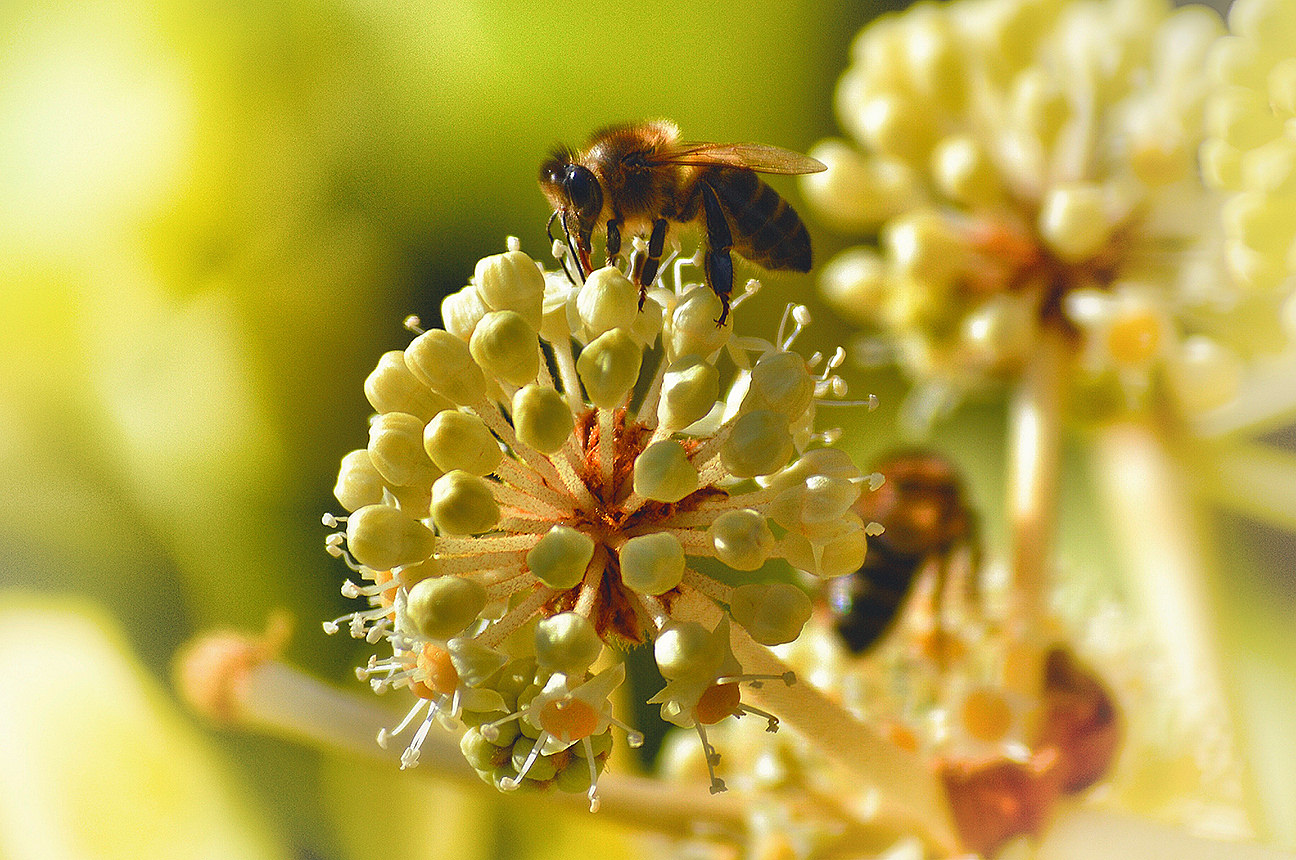![]()
LOCAL LOVES THE RESILIENT HONEYBEE

Many Central California farmers rely heavily on honeybees to pollinate crops because there are few remaining habitats for native bees. In the Northeast, however, fields and orchards are often surrounded by plants, so native bees have plenty to eat and pollinate crops as they buzz from hedgerow to hedgerow. In a 2009 study of 11 apple farms in New York State, researchers counted 81 species of native bees.
Still, many larger farms rely on honeybees. So it was alarming when, about a decade ago, beekeepers began reporting disappearing honeybee hives. Previous plagues had left dead bees, but this time the worker bees abandoned the queen and her brood. Even when a colony is left with reserves of honey, it quickly dies off without worker bees. This phenomenon became known as colony collapse disorder or CCD.
In 2008, two years after CCD was discovered, the number of honeybee colonies hit its lowest point at 2.4 million. Happily, a queen bee lays 1500 to 2000 eggs a day, making honeybees one of the most resilient species on earth. With about 2.7 million colonies in the U.S. today, honey bees are making a slow comeback, though the causes of CCD remain unclear. Scientists continue to study a variety of factors including the interplay of pesticides, mites, and other pests.
So exactly how much effort goes into making honey? Worker bees must fly 55,000 miles and visit 2 million flowers to make one pound of honey, and the average colony makes 60 to 100 pounds a year. No wonder they’re called worker bees.
This small but mighty creature plays such a crucial role in our food system…and in making our Local Honey Yogurt and Local Honey Kefir so delicious.
